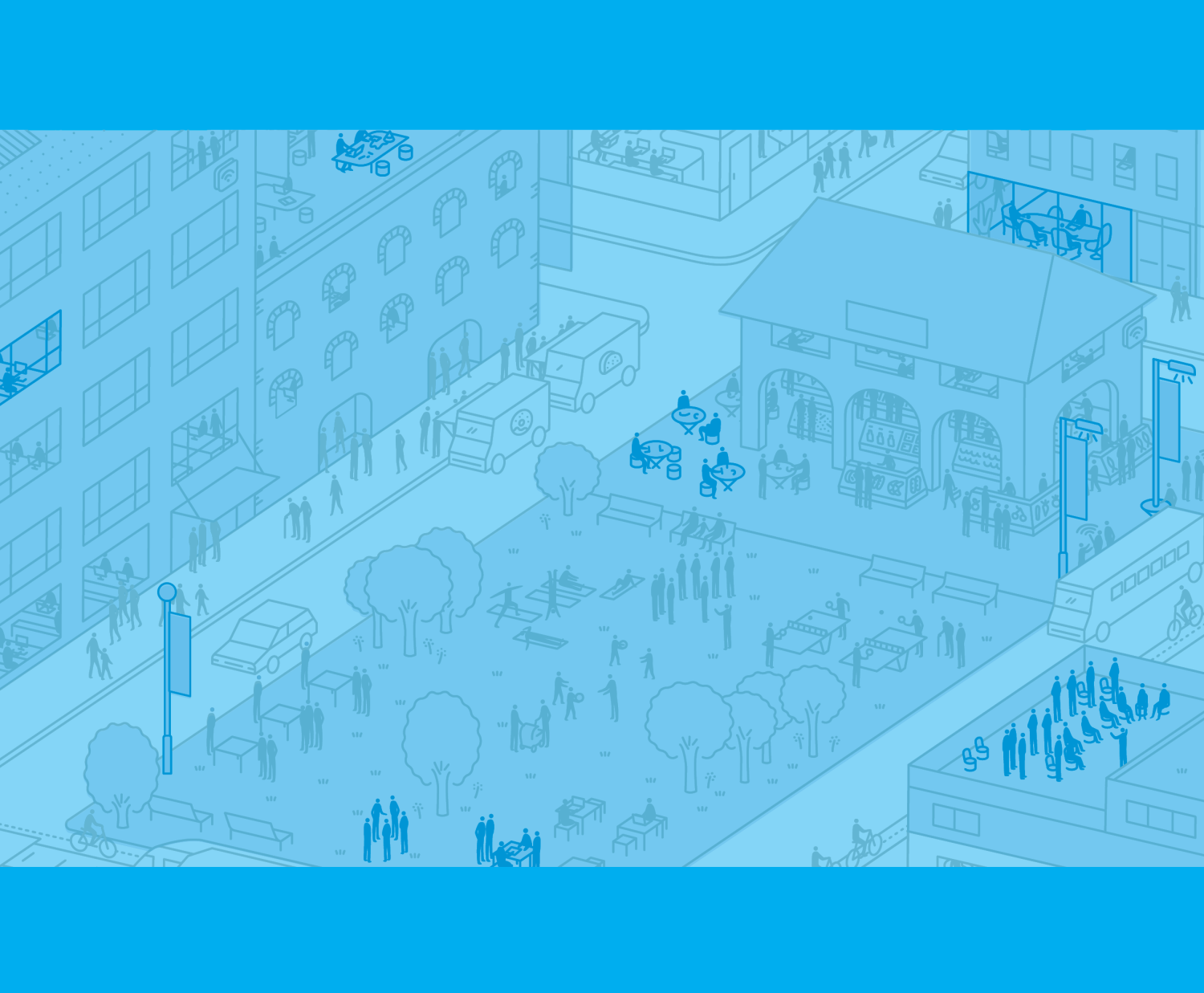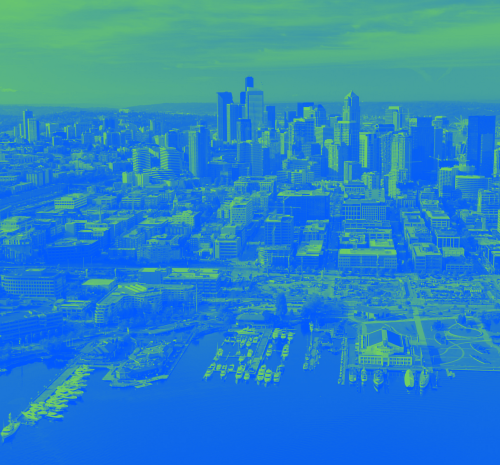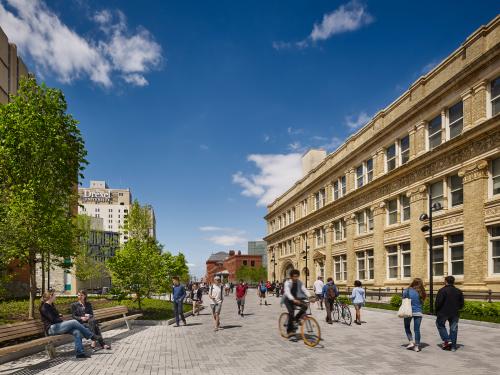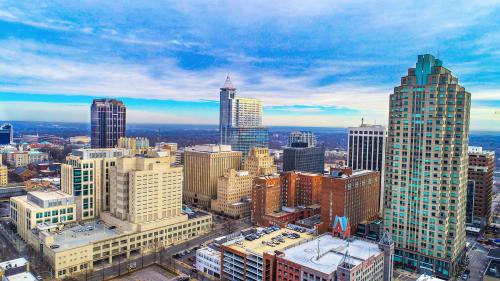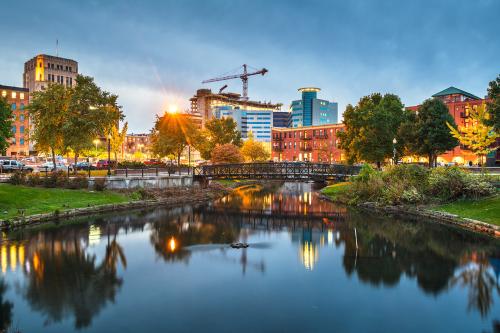Click here to read the other Opportunities for Transformative Placemaking case studies.
Over the course of the last two decades, many cities across the country have been experiencing a comeback. Americans are migrating to urban areas in pursuit of career opportunities, dynamic neighborhoods, and vibrant public spaces. However, even as new investment, development, and residents are clustering in city centers and certain neighborhoods, many urban communities are struggling to take advantage of this growth.
This profile looks at Chicago’s Bronzeville area, a dynamic and culturally rich community well positioned for growth, which continues to be challenged by the lasting effects of disinvestment, population loss, and policies that stymie economic opportunity.
History and context
Bronzeville has been the heart of Chicago’s black community for over a century. During the early to mid-20th century, the Great Migration brought hundreds of thousands of African-Americans north to Chicago in search of economic opportunity and relief from racial violence and oppression. Most of these newcomers settled in and around Bronzeville and it came to be known as one of America’s great black metropolises.
These residents, confined to the area by restrictive covenants that aimed to prevent African-Americans from purchasing homes in other parts of the city, created a flourishing city within a city. The nation’s first black-owned bank, the Binga State Bank, opened there in 1921. The Chicago Defender and Chicago Bee were Bronzeville-based daily newspapers that had widespread influence and distribution, helping to establish the neighborhood as a national center for black journalism. Bronzeville was also an epicenter of entertainment and intellectualism. Many of the most important cultural figures of the 20th century lived in Bronzeville or frequented its storied venues and community spaces, including Louis Armstrong, Dinah Washington, Nat King Cole, Richard Wright, Ida B. Wells, and Gwendolyn Brooks.1
However, Bronzeville’s status as a thriving economically diverse community was dealt a blow beginning in the 1930s. The Great Depression brought wide-scale unemployment to the neighborhood and the closure of many black-run businesses and financial institutions. Post-World War II housing policies further weakened its economic base. Large swathes of Bronzeville’s housing stock were demolished, replaced with dense clusters of public housing. Easing segregation policies in the 1950s and 1960s also allowed middle and upper-class black residents to move from the overpopulated area, leaving behind a disproportionately low-income community with high unemployment and high crime rates. In 1962, the Dan Ryan Expressway opened on Bronzeville’s western border, physically and economically isolating the community from other neighborhoods and perpetuating a cycle of disinvestment, decline, and urban renewal efforts to combat those trends that in many ways continue to this day.
In the 1950s and 1960s, 7,000 units of public housing were built to accommodate the neighborhood’s growing population. Initially, these new buildings were beacons of hope to Bronzeville’s low-income population. In addition to the stable housing they offered, these units facilitated a kind of intentional community building, providing public spaces for congregating, playgrounds for children, and greenspace for residents to enjoy. However, poor maintenance, disinvestment, and neglectful bureaucracy reduced many of these structures into magnets for crime, and their names—the Robert Taylor Homes, Stateway Gardens, the Ida B. Wells Homes—became synonymous with urban blight. Ultimately, the city gave up on its high-rise public housing experiment. In 1999, the Chicago Housing Authority’s “Plan for Transformation” began a large-scale demolition process that promised to replace the worst of the high-rise public housing units with mixed-income communities.2
From a peak of over 75,000 in 1950, Bronzeville’s population now sits at 42,696. Approximately 43 percent of these residents live in low-income households earning less than $25,000 a year (compared to a rate of 23 percent in Cook County overall). While Bronzeville has a significant low-income population, the area has seen a steady increase in middle-income households likely drawn to the area due to its proximity to downtown and Lake Michigan.3
Bronzeville’s current economic base relies heavily on public sector, institutional, and nonprofit employers. Major employers in these categories include the Chicago Police Department (with its headquarters located in Bronzeville), Chicago Public Schools, and social service providers. The Illinois Institute of Technology, U.S. Cellular Field (home of the Chicago White Sox), the Illinois College of Optometry, and Dawson Technical College are also among Bronzeville’s most important economic assets. In 2011, the private sector made up only about a third of the neighborhood’s approximately 21,000 jobs.4
Challenges and opportunities
Bronzeville has a series of challenges that are common to many under-resourced urban commercial districts across the country. Retail options are limited, forcing locals to leave the neighborhood to purchase basic goods. A 2010 retail scan of the area found that Bronzeville had over $175 million worth of concentrated buying power per square mile, exceeding the city of Chicago’s average of $168 million per square mile—suggesting that there is untapped potential for retail growth.5 Crime also remains an issue, challenging retail development efforts and negatively impacting quality of life for residents.
Despite these challenges, Bronzeville’s proximity to downtown, ample public transit options, rich cultural history, and lakefront access have fueled a resurgence in recent years. Local community-based economic development organizations like the 51st Street Business Association and the Quad Communities Development Corporation are helping to align financial resources and focus revitalization efforts on Bronzeville’s major commercial corridors, prioritizing projects that address the housing and retail needs of residents. Over the course of the last decade, these groups have worked with developers, investors, and the city of Chicago to help usher in a new era of catalytic development. Major projects include The Shop and Lofts, a mixed-use commercial and mixed-income residential development that opened in 2014 on 47th—the historic commercial core Bronzeville—after close to a decade of work to secure financing and local buy-in. This 96-unit building is anchored by a Walmart Neighborhood Market and is seen as a model for community-led planning.6 Another major development, the Bronzeville Arts and Recreation Center, opened in 2016 after more than a decade of planning and community-driven organizing. The facility fills a major need for a quality arts and recreation space, and is equipped with a full-size swimming pool, fitness rooms, multi-purpose space, and a rooftop terrace for meetings.7 Other significant new additions to the neighborhood include a 74,000-square-foot Mariano’s Supermarket which opened on King Drive in 2016 and a recently announced major new mixed-use development called 4400 Grove, which will feature 41 units of mixed-income housing as well as over 15,000 square feet of ground floor retail space.8
As these major developments serve growing demand for housing and affordable retail, smaller-scale placemaking efforts are helping to support local entrepreneurship, create inviting streetscapes, and enhance public spaces. For example, Boxville, a new pop-up retail concept created by local developer Bernard Lloyd, opened in 2017 on 51st Street on vacant land next to a Chicago Transit Authority Green Line “L” stop. This open-air marketplace features local entrepreneurs and vendors serving up streetwear, fresh produce, bike repair services, and more out of reclaimed shipping containers. In its inaugural season, Boxville hosted 64 locally owned enterprises, and served more than 2500 patrons.[9] City of Chicago-supported Special Service Area organizations have also led neighborhood branding and beautification efforts, adding banners, planters, and murals that reinforce a sense of place and celebrate Bronzeville’s history throughout the district.9
Finally, the area remains a destination for arts and culture. An emerging Bronzeville Arts District, which consists of six well-established visual arts spaces, hosts monthly trolley tours showcasing the neighborhood’s deep artistic roots. Street festivals, including the popular Bronzeville Summer Nights and the 51st Jazz Festival, attract residents and visitors to experience the dynamism of the community. These efforts speak to the community-driven efforts underway to bring renewed vitality and opportunity to the district.
With major development projects underway, new regional and local retailers setting up shop, and place-based efforts to highlight the district’s history taking root, Bronzeville is showing encouraging signs of momentum. The challenge for the neighborhood, like in so many comparable urban communities around the country, will be to ensure that development efforts connect existing residents to new job and market opportunities and create quality places that are authentic to Bronzeville’s cultural heritage.
-
Footnotes
- “Chicago and the Great Migration, 1915 – 1950,” available at https://dcc.newberry.org/collections/chicago-and-the-great-migration (September 2018).
- Jake Bittle, Srishti Kapur, and Jasmine Mithani, “Redeveloping the State Street Corridor,” South Side Weekly, January 31, 2017, available at https://southsideweekly.com/chicago-unfulfilled-promise-rebuild-public-housing/.
- “Community Data Snapshot | Douglas,” and “Community Data Snapshot | Grand Crossing,” available at http://www.cmap.illinois.gov/documents/10180/126764/Douglas.pdf and http://www.cmap.illinois.gov/documents/10180/126764/Grand+Boulevard.pdf (September 2018).
- Chicago Metropolitan Agency for Planning, “Bronzeville Retail Corridor Land Use Plan” (2012).
- Ibid.
- John McCarron, “Shop and Lofts Lesson: Never Give Up,” LISC, Chicago, available at http://archive.lisc-chicago.org/news/2627.
- Grace Wong, “Decade in the planning, Bronzeville art and rec center to open,” Chicago Tribune, July 4, 2016, available at http://www.chicagotribune.com/news/local/breaking/ct-bronzeville-arts-and-recreation-center-met-20160704-story.html.
- Carlos Ballesteros, “Bronzeville set for new development on Cottage Grove vacant lot,” Chicago Sun Times, June 7, 2018, available at https://chicago.suntimes.com/news/bronzeville-chicago-housing-development-cottage-grove-vacant-lot/.
- Metropolitan Planning Council, “Developing Vibrant Retail in Bronzeville,” (2012).

